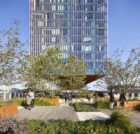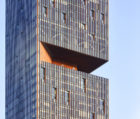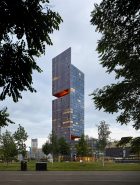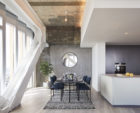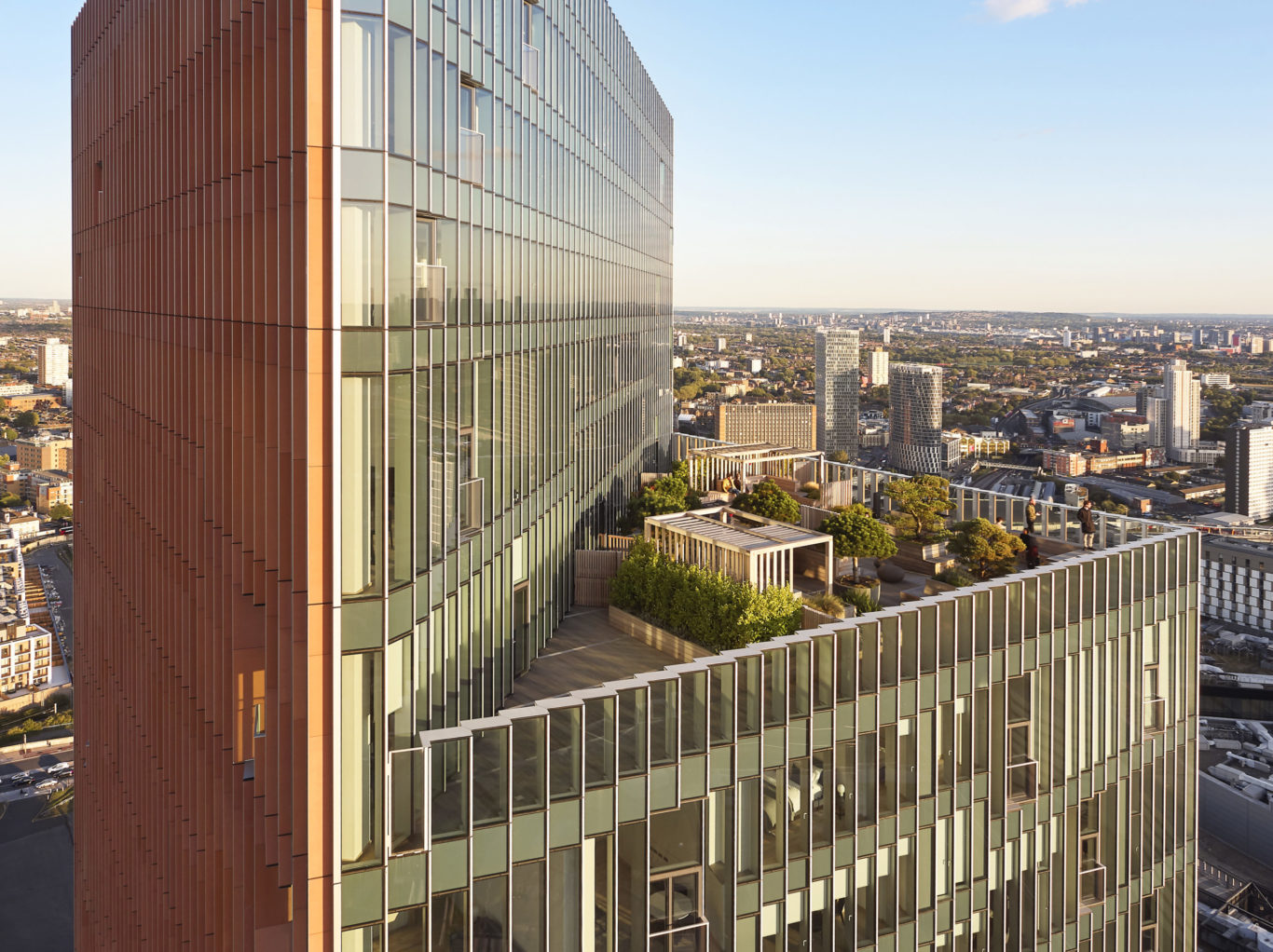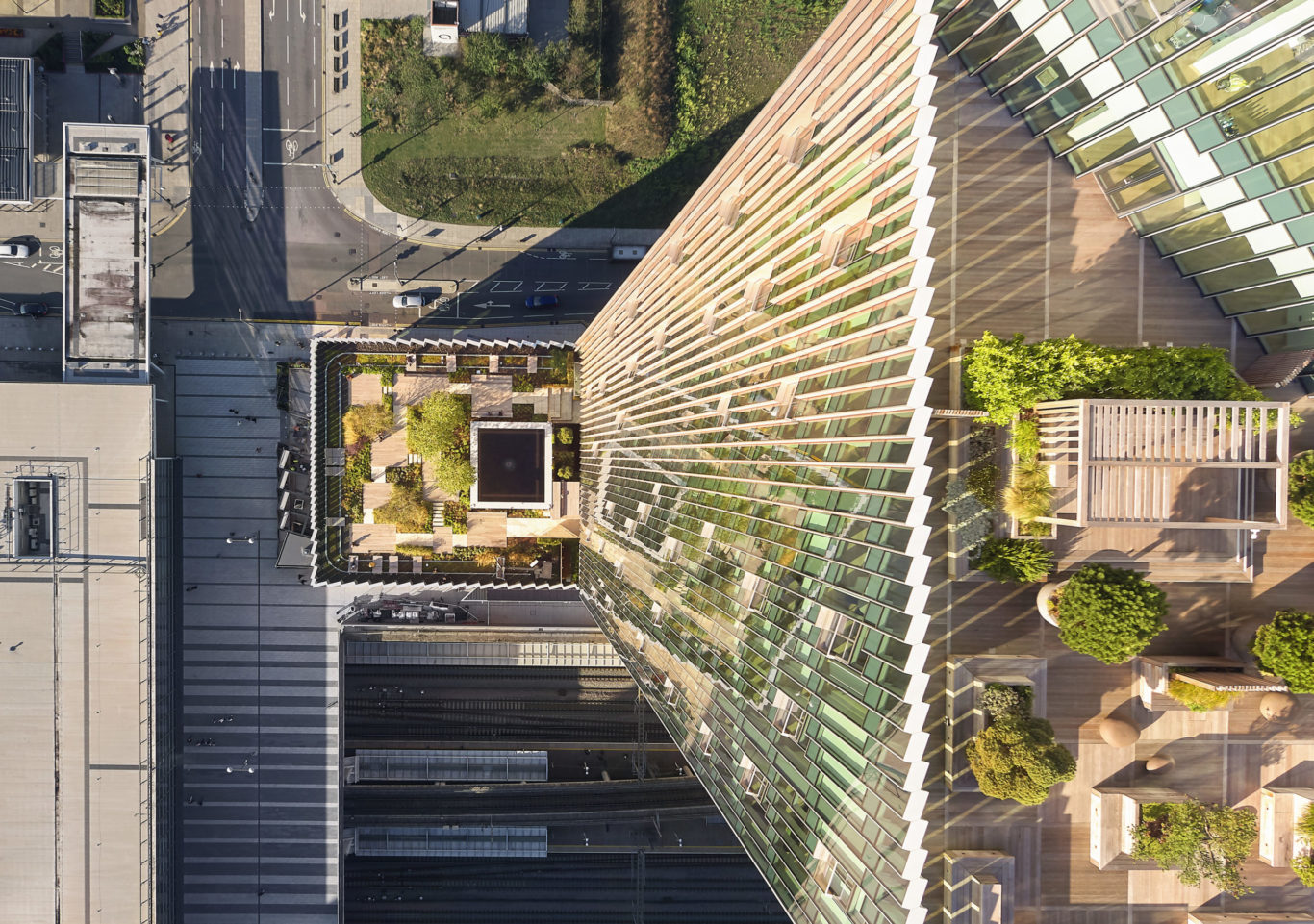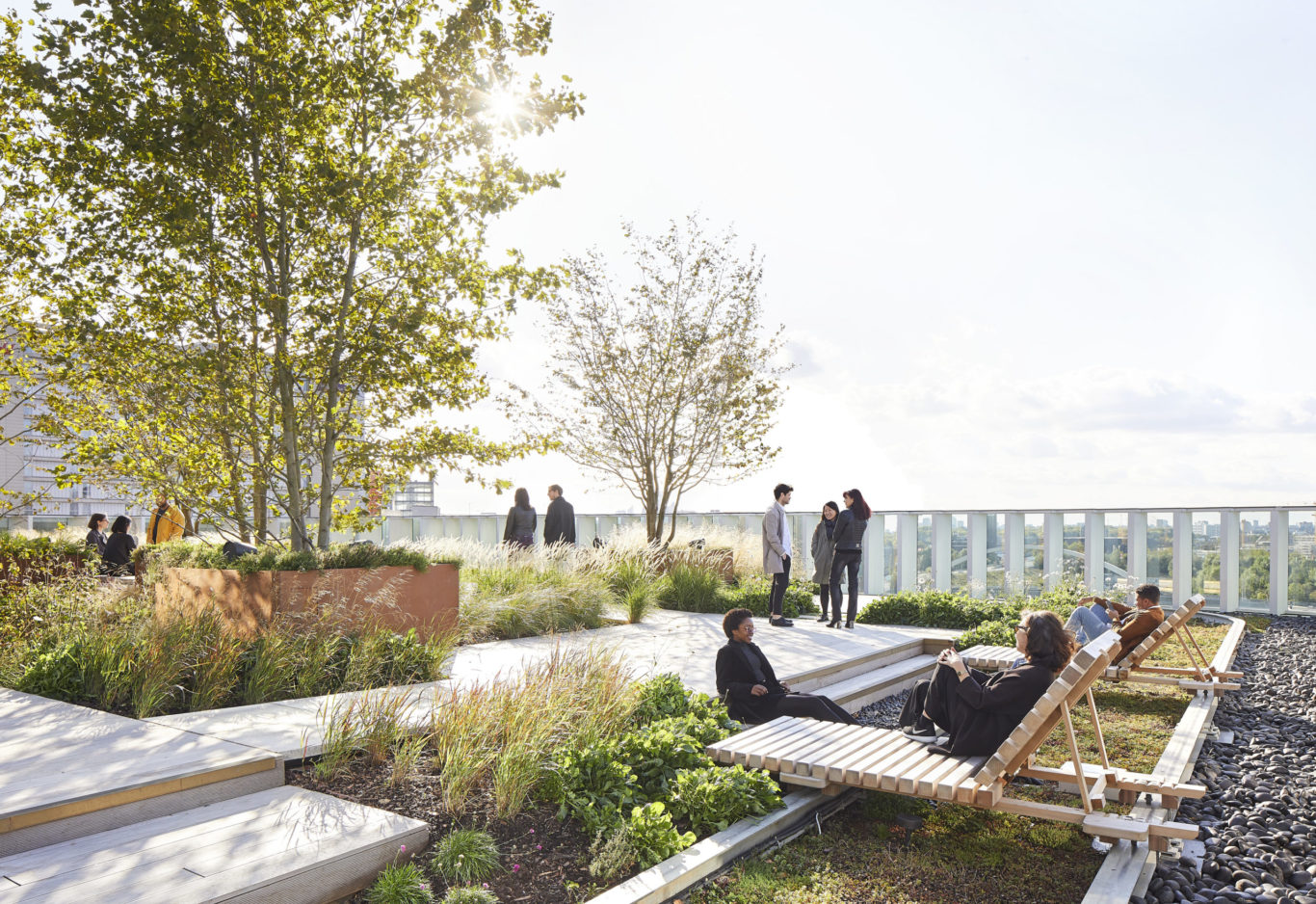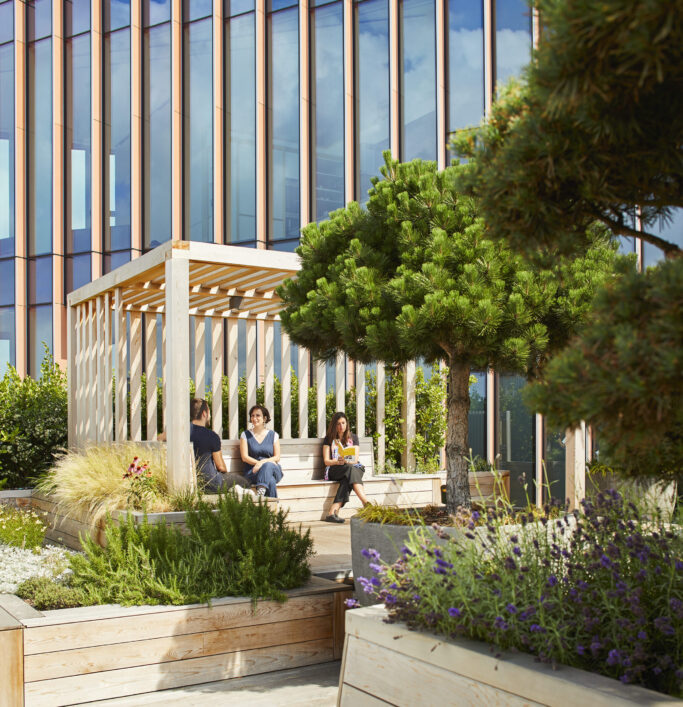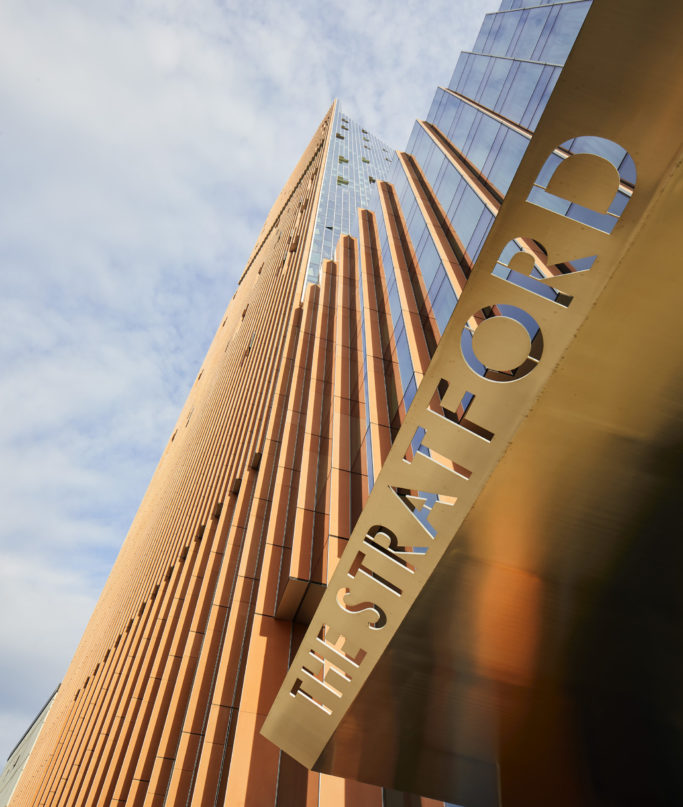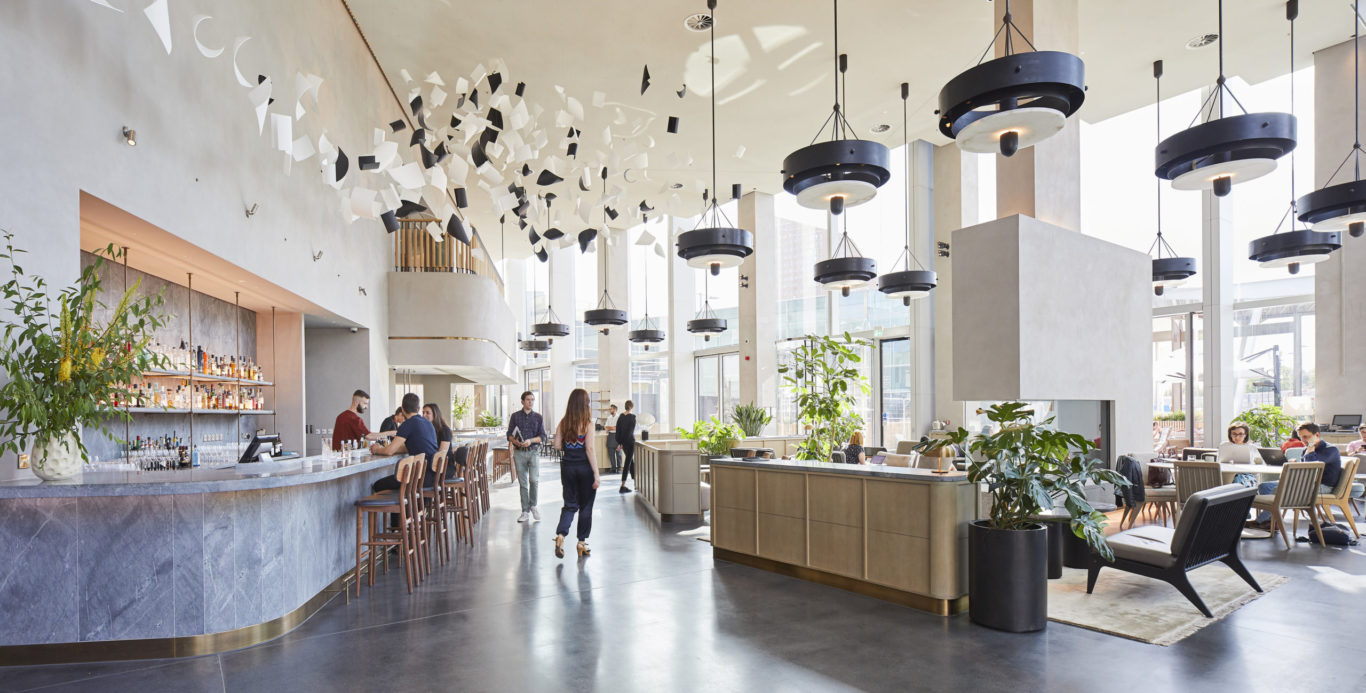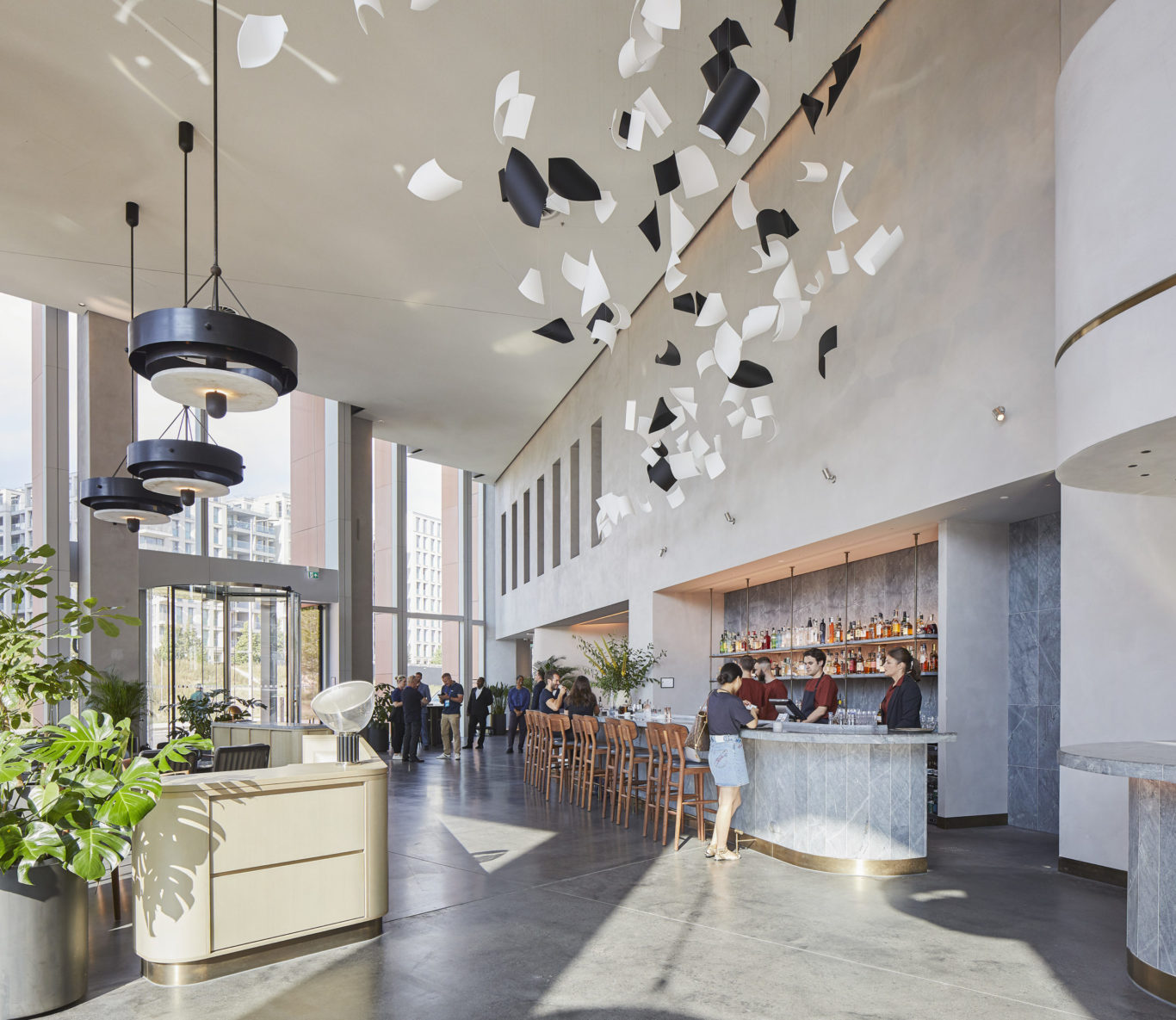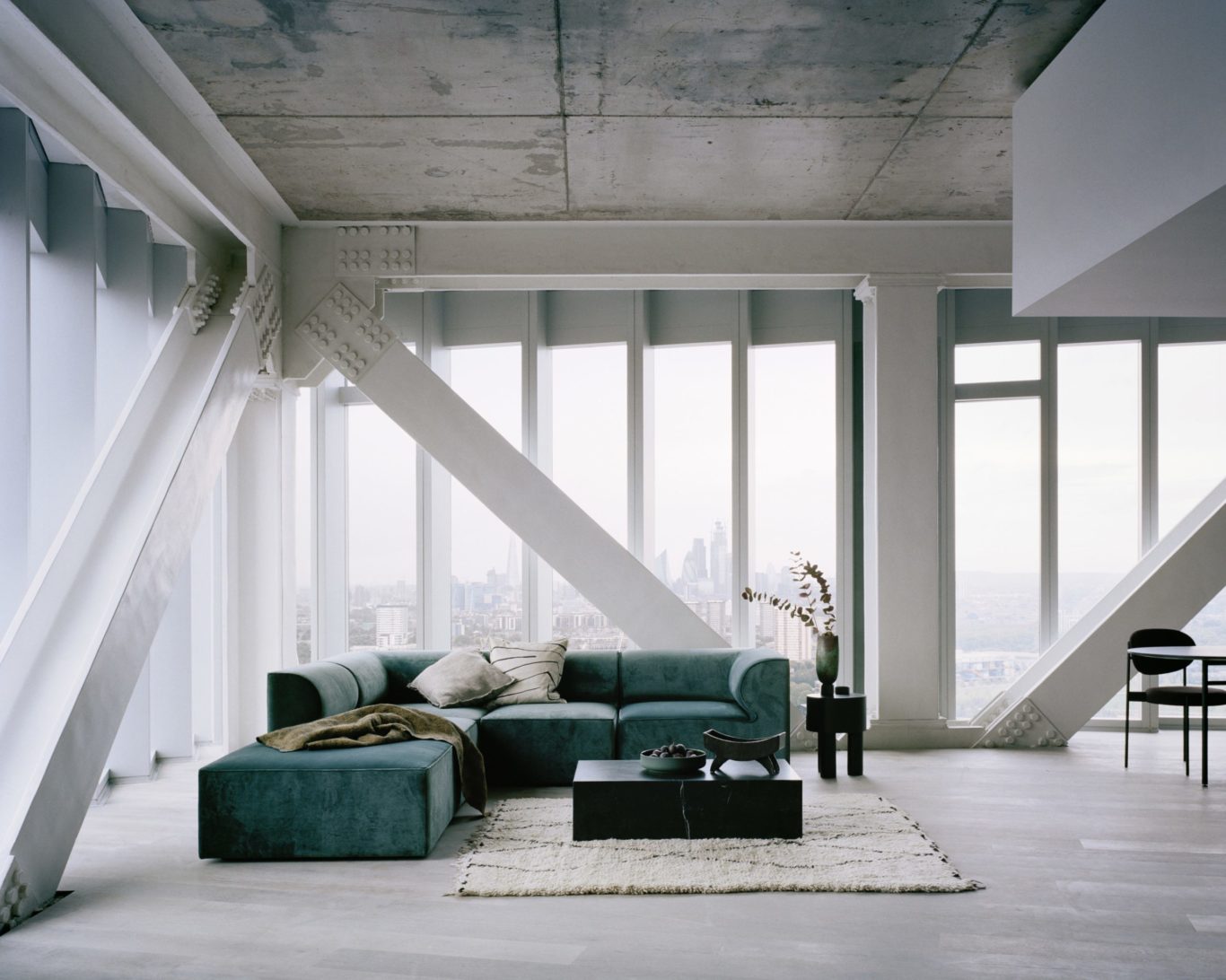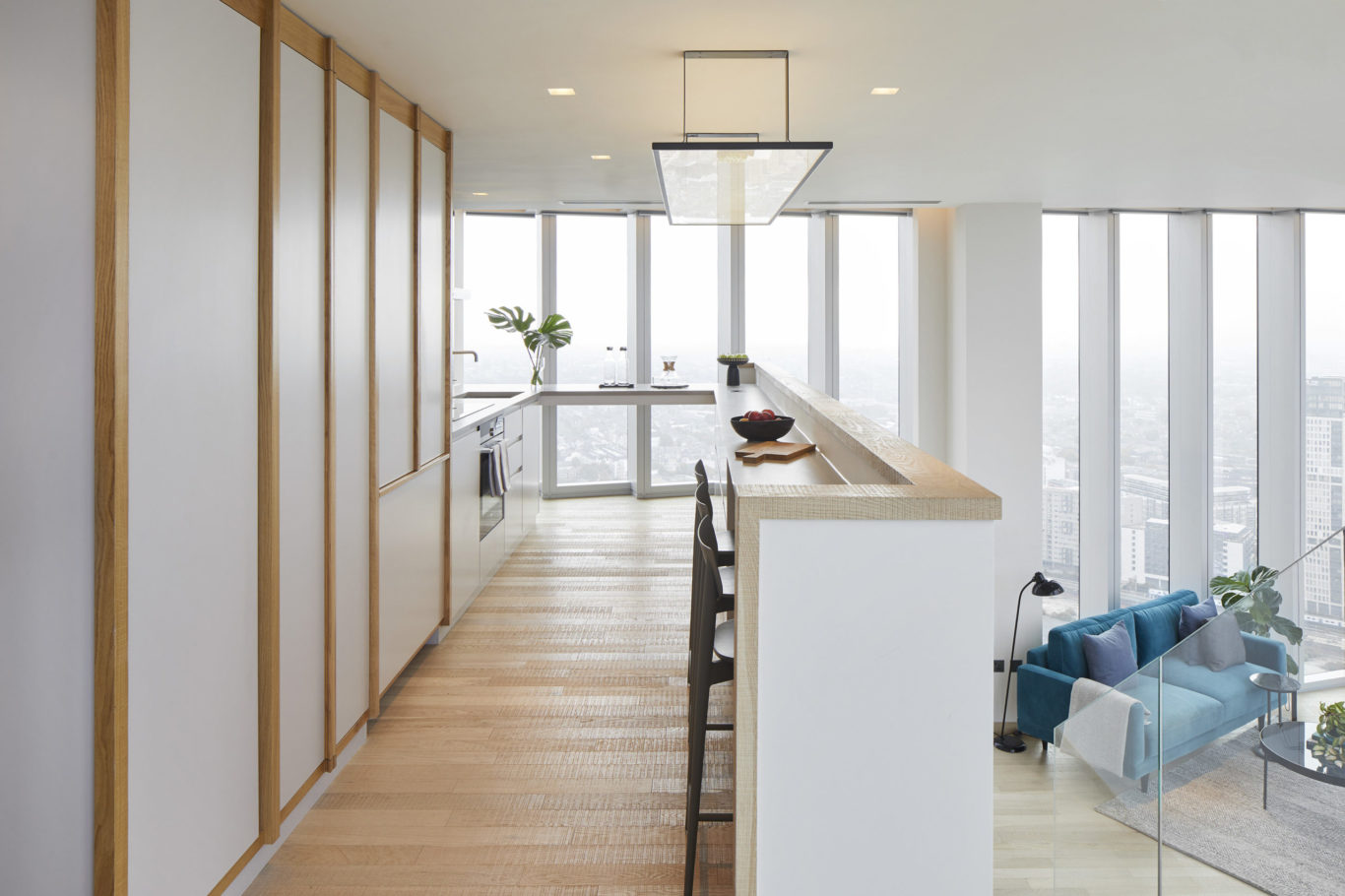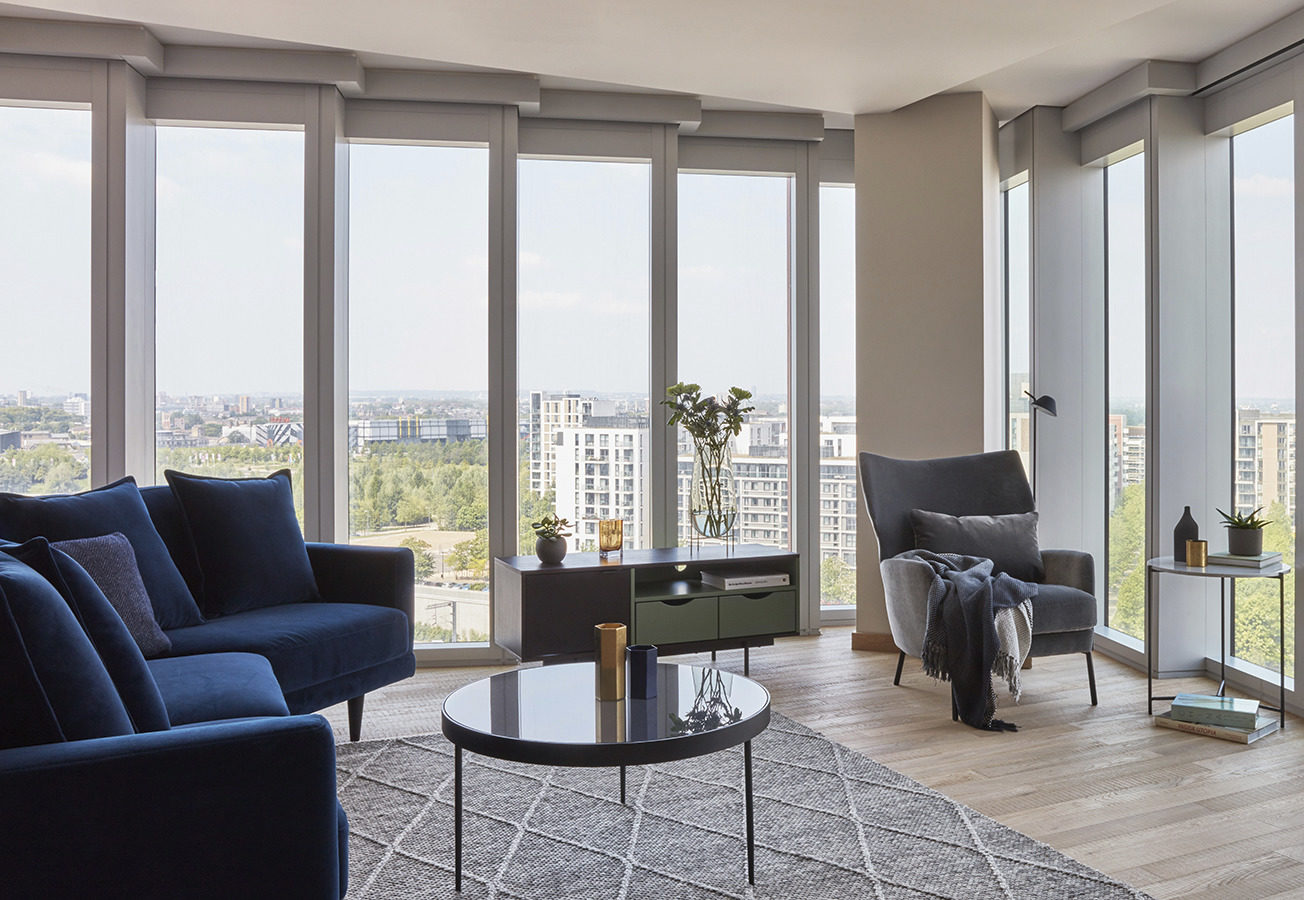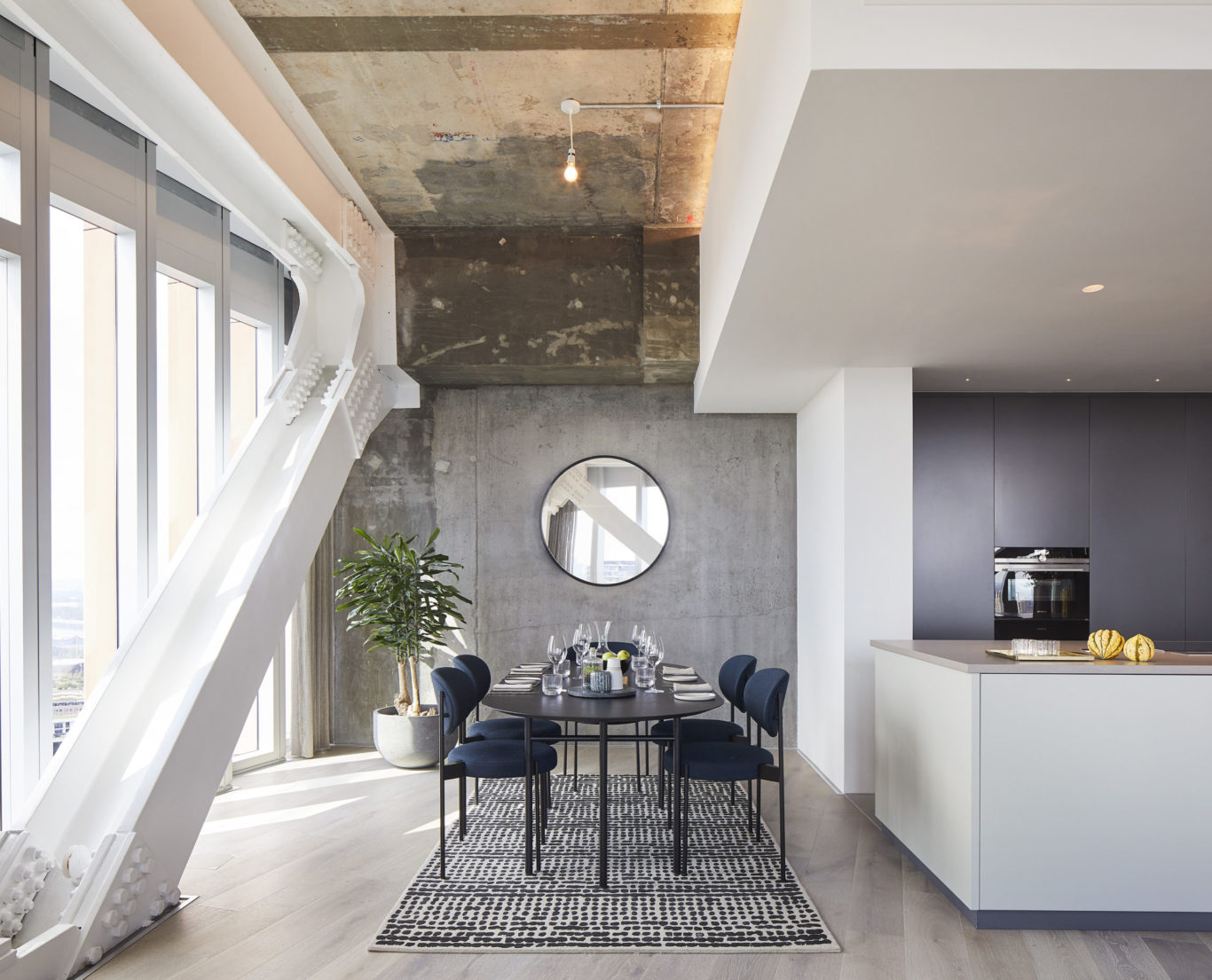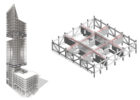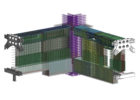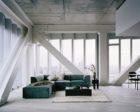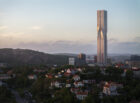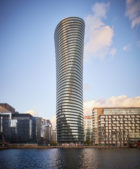New views on a burgeoning district
Manhattan Loft Gardens is located in Stratford, the site of the 2012 Summer Olympics. The event catalyzed a full-scale transformation of the district, which includes new campuses for University College London and the London College of Fashion along with venues for the BBC, Sadler’s Wells Theatre, and the V&A Museum. All of this is bringing new energy to East London — and Manhattan Loft Gardens is at the center of the action.
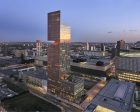
The 42-story building makes a dramatic impression, with two diagonal slices carved out of the tower and residential levels cantilevered above. The deep cutaways are inset with landscaped outdoor spaces, called “sky gardens,” Shared by the tower’s residents, these vertical green spaces serve a similar social function as London’s traditional residential squares and streetscapes that encourage interactions between neighbors. The cantilevered design turns the garden levels into column-free vantage points, creating common spaces with uncommon views.
